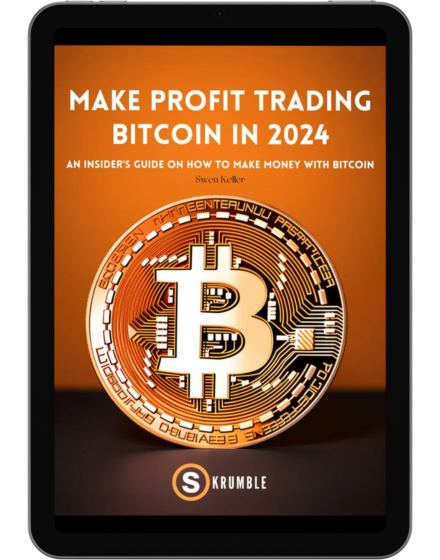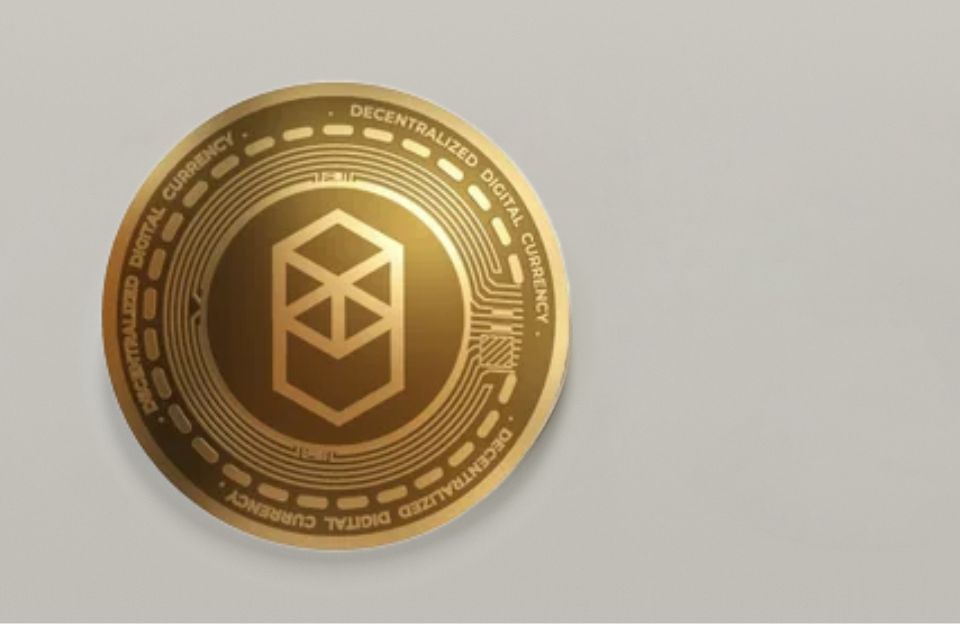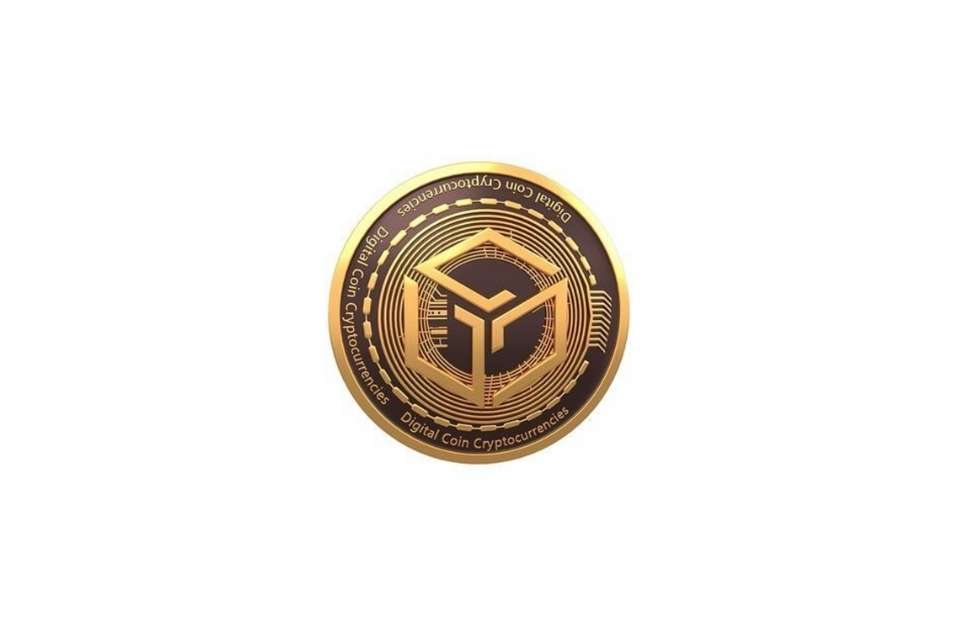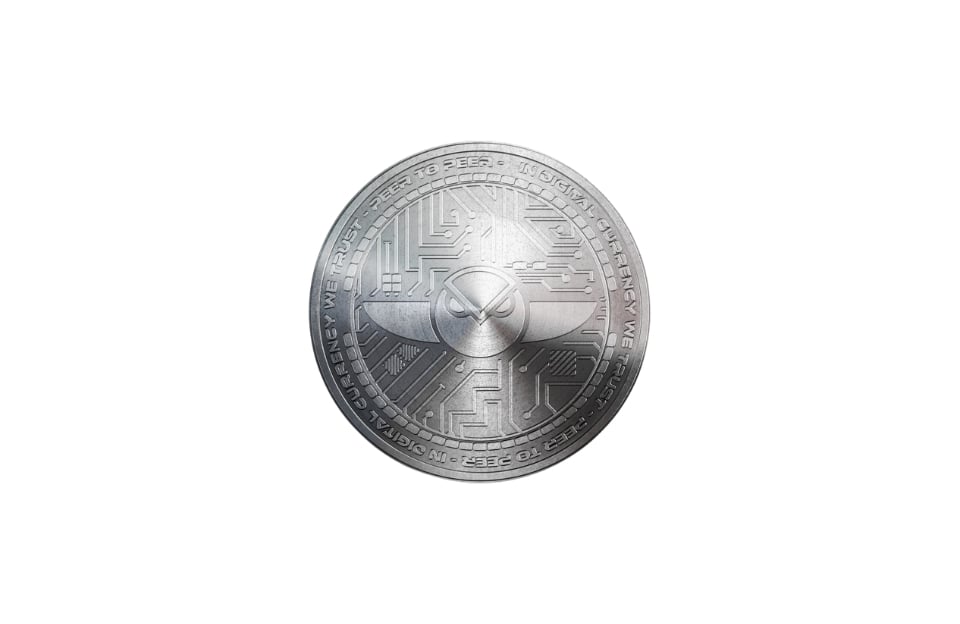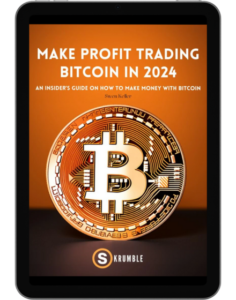What is Kadena (KDA)?
Luis Clark
- Home
- /
- Cryptocurrencies
- /
- What is Kadena (KDA)?
Luis Clark
What is Kadena (KDA)?
Kadena (KDA) is a Proof-of-Work blockchain built to offer a decentralized infrastructure that seeks to optimize scalability and uses a smart contract language called PACT which enables formal verification and upgradable smart contracts. The Kadena chain also has a native currency, KDA.
KDA is used on the platform to pay for computing. And offers 2 primary utilities. First, the KDA coin is used as a reward for miners mining blocks in the Kadena network. Secondly, it is used for transaction fees that users pay to add blocks.
The Kadena platform seeks to ensure that blockchain is accessible and usable by everyone. And to achieve this, the platform aims to provide a one-size-fits-all solution for all resources needed to build blockchain applications. It is also the first blockchain to solve the blockchain trilemma of security, decentralization, and scalability.

The team behind the platform also states that Kadena was created on the idea that blockchain technology can directly change the contemporary methods of transactions and communication. However, at the time of its development, chain technology wasn’t effective in aiding widespread acceptance. So a reinvention was required and the Kadena team designed a proprietary chain architecture and the tools required to make the blockchain technology work better for business with improved speed, energy efficiency, and scalability.
Who is the Founder?
Stuart Popejoy and Will Martino are the co-founders of Kadena. The platform was founded in 2016. But before the launch of Kadena in 2016, both founders built JP Morgan’s first blockchain called the JPM coin, Will Martino was the Tech Lead for the SEC’s Cryptocurrency Steering Committee, and Stuart Popejoy led JPMorgan’s Emerging Blockchain group. Kadena also has a rich advisory team, with the likes of Stuart Haber, the co-creator of blockchain, being a part of the platform’s advisory board.
The platform also has members who have worked at Disney, Microsoft, and Google.
How does Kadena Work?
Kadena utilizes smart contract language PACT, which is meant to be more easily accessible to laymen or crypto newbies than other coding languages.
The cryptocurrency also uses Proof-of-Work rather than Proof-of-Stake to process transactions on its blockchain. The Kadena team believes Proof-of-Work is the best method for safeguarding their blockchain.
That said, proof of work comes with its challenges which include scalability. This is visible with cryptocurrencies like Ethereum and Bitcoin, which are slow in comparison to new blockchains and have expensive transactions.
Kadena’s way around this is Chainweb. Chainweb essentially shards transactions. Sharding a transaction is the process where a transaction is broken up into smaller blocks enabling them to be processed cheaper and faster. This is something Ethereum also seeks to achieve with its upgrade to Ethereum 2.0.
In addition, Chainweb enables Kadena’s Proof-of-Work system to stay energy efficient. This is unlike Ethereum and Bitcoin, which makes it easily adaptable with less resistance.
Kuros, Kadena’s Layer 2 private blockchain builds on this by enabling businesses to leverage its layer 1’s throughput and scalability to automate and process workflow via smart contracts.
Key Features of Kadena
KDA Token
KDA Token is Kadena’s utility token which is used as a payment method and reward for miners within the Kadena ecosystem. Users who mine Kadena receive KDA in return because the mining helps to ensure the security of the network. There are over 1 billion KDA tokens to be generated but currently, only over 180 million KDA tokens are in circulation.
70% of all KDA tokens can be generated by miners while 20% of all the tokens are reserved for the project for purposes such as stabilizing the network. 3% of the tokens are distributed among Kadena employees, while 7% of all Kadena tokens are dedicated to start-up investors.
Kadena token is used to execute smart contracts and transactions. It is used to pay for the computing power of the Kadena blockchain just like gas is used on Ethereum.
As already stated, the KDA token is also used to reward miners who discover the next valid block. This is important because it ensures that transactions can be verified and also added to the blockchain as new blocks.
KDA can also be transferred directly between users. Users can use it to pay their transaction fees.
PACT
PACT is a Safe Smart Contract Language designed by Kadena to deliver web3 innovation and fundamentals alongside web2 usability. The use of PACT ensures the interoperability of private and public blockchains. It facilitates the execution of smart contracts only on the intent of the programmer.
According to the Kadena team, this smart contract is one of the simplest programming languages. It has a simple integration with existing corporate databases via its API. PACT can be likened to Excel formulas, any advanced Excel user, or a novice JavaScript programmer can easily access it and write their smart contract on it.
PACT smart contracts are executed directly on the ledger. The smart contract can also be verified by non-programmers because the PACT code is stored in a human-readable format as an immutable transaction.
Chainweb
Kadena’s Chainweb is a modern parallel chain Proof-of-Work architecture that is made up of braided chains. These chains all mine the same native currency and exchange liquidity with each other.
Chainweb requires little hash power to offer massive throughput. It can grow to a minimum of 1,250 chains while executing over 10,000 transactions per second without losing its resilience against fraud. Censorship of Proof-of-Work is also maintained.
Weaknesses of Kadena
Kadena has performed poorly in recent times because of the lack of a strong ecosystem. The Kadena network only has 4 developed applications: Kaddex, KDLaunch, Babena, and Anedak. Plus, the total value of its locked tokens is just about $2.5million with Babena providing 88.5% of that.
While the Kadena blockchain currently prides itself in processing transactions at an impressive speed, other competitors like Solana and Avalanche are beginning to catch up with it. If nothing is done to boost the Kadena ecosystem, within the coming years, the present Kadena price may drop and the platform will get lost in the crowd.
How is Kadena Created?
Kadena is created by individual miners that use PACT to create smart contracts. Currently, the total supply of KDA is pegged at 1 billion tokens fixed to be mined for more than 120 years. The emission of the platform is accomplished via 2 separate processes:
- Mining
- Release of allocated tokens
That said, the overall emission occurs via mining, which is incentivized by rewards that will decrease in time. Just like mining rewards on the Bitcoin network, this reduction runs over 100 years.
The second source of tokens on the Kadena platform is through pre-allocated tokens defined in the genesis block. This is the first block on every Kadena chain that other blocks are mined from. The overall emission for this source also reduces with time. This, however, was introduced in 2021 by Kadena to balance its capacity to build the platform, while maintaining a token emission that ensures a healthy economy.
That said, Kadena’s overall token allocation model stayed unchanged, totaling 990 million coins. The difference (10 million) between its 1 billion theoretical supply and the 990 million real-world total token supply allocated is because of the mega token burn that happened during the network launch.
Miners will get 70% of the overall supply with 700 million coins to be released over the coming 120 years. And the platform’s share is 200 million KDA (20% of the overall supply). In 2021, 3.7 million KDA was released and the remaining 196.3 million KDA is to be emitted over the coming 9 years.
Contributors, the strategic fund, and investors received 6% of the supply (a 90 million allocation). This is to be distributed to Series A and B investors, future sales, ecosystem initiatives, consultants, advisers, and contributors such as employees.
Mining Kadena
Kadena uses the Blake2S mining algorithm. This algorithm supports only ASIC mining. To start mining Kadena you’ll need to adhere to the following steps:
Step 1: Get the Right Hardware
Kadena cannot be efficiently mined with FPGA, CPUs, and GPU miners. It can only be efficiently mined using ASIC miners.
Step 2: Get a Wallet
If you don’t already have a Kadena wallet you’ll need to get one to hold your mined coins. This is required to receive your mining rewards. The recommended option is the official Kadena full node wallet. Once you’ve installed it, you just need to click receive to get your wallet address.
You can also opt to use cryptocurrency exchanges like Binance, Bittrex, or KuCoin to hold your mined Kadena coins. However, web wallets are less secure and you’ll need to do proper research before choosing a crypto exchange or wallet provider.
Step 3: F2Pool Account
You need to create an F2Pool account before you can start mining Kadena. The purpose of this is to configure your mining device accordingly.
After signing up for an account, you’ll need to choose a username. This will be needed for configuration. F2Pool allows you to create many sub-accounts for mining KDA, so you can create more if needed, and monitor all your mining machines from one location.
Step 4: Mining Device Configuration
When configuring your rigs you need to use your F2Pool username and your rigs need to be connected to an F2Pool server for your reward and hash rate to be monitored and recorded.
Here’s the information you’ll need to enter into your mining device:
- URL: stratum+TCP://kda.f2pool.com:5400
- Username: account name.workerName
- Password: Custom
Step 5: Mining
At this point, you’re ready to start mining. You can manage your account details and monitor your revenue, payouts, and hash rate in the F2Pool app or dashboard.
What Blockchain does Kadena Use?
Kadena (KDA) uses the Kadena Chainweb blockchain. The Chainweb can sustain 480,000 transactions per second on 20 chains. It is also the world’s first shared Proof-of-Work layer-1 blockchain for the scale required of retail and institutional applications.
How to Use Kadena?
Kadena (KDA) cryptocurrency is used to pay for computations on the Kadena public chain. Just like ETH on the Ethereum platform, KDA on Kadena is how miners are rewarded for mining blocks on the network. KDA is also the transaction fee users pay to have their transactions added to a block.
How to Buy Kadena

Kadena is only available on a few exchanges like Binance, Crypto.com, etc.
The easiest way to find out where to buy Kadena is on CoinMarketCap. CoinMarketCap provides a list of market pairs for each currency listed.
To find out how to buy Kadena on CoinMarketCap, do the following:
- Go to CoinMarketCap
- Search for Kadena
- Next to the price chart, there is a button labeled “Market” tap the button.
- A comprehensive list of where you can buy Kadena. A list of the currencies you can use to purchase it will also be displayed.
- Scroll to the section labeled “Pairs”. In this section, you will see Kadena written in the shorthand “KDA” as well as a second currency.
- The second currency displayed is the currency you can use to buy Kadena. For instance, if you intend to buy Kadena with US Dollars, it will be displayed as KDA/USD.
- Once you are done, select the platform you wish to purchase Kadena from. It is important to choose a platform with good security and liquidity.
- After choosing the platform, you can follow the platform’s guidelines on how to make the purchase.
Buying any crypto including Kadena with fiat currency is always easier than using one cryptocurrency to purchase another. This is because to buy Kadena with another crypto, you will need to create a crypto wallet that supports KDA, buy the first currency and then use the first currency to buy Kadena on your preferred platform. This process is often long and complex.
As already stated, each platform has its guidelines for buying Kadena. For instance, if you are buying Kadena from Binance, these are the guidelines:
- Create and verify an account with Binance if you don’t already have one.
- Click on “Buy Crypto” this link is located on the left side of the Binance website. You will be shown the options available in your country.
- If you wish to buy Kadena with crypto, you should buy a stablecoin like USDT first then use the coin to buy KDA.
- Alternatively, you can use your debit or credit card. This is the easiest way to buy Kadena on Binance. The platform supports Visa and Mastercard.
- You can also buy KDA on Binance using bank transfer, peer-to-peer trading, or using third-party payment channels.
How To Store Kadena
You can store Kadena in your crypto wallet on any platform that supports the coin. For instance, if you use Binance, you can hold KDA in your Binance account. There are, however, Kadena specialized wallets that you can store Kadena on. Let’s take a look at these wallets.
Chainweaver

Chainweaver is the official Kadena wallet for smart contract development and advanced blockchain usage. The app is available for download in three formats: (1) .dmg for Mac, (2) .deb for Linux, (3) and .ova for Windows, Linux, and Mac as a virtual appliance. It also has a desktop version that interacts with Dapps on Kadena Chainweb via its signing API.
This wallet allows you to interact with different networks including Testnet and Mainnet.
Mainnet (Main Network) is the major live blockchain network where smart contact services can be called and assets of value can be transferred. Test networks (Testnet), on the other hand, are networks that users can use to safely test different blockchain interactions without losing valuable assets. With Testnet, users can acquire KDA coins for free through a coin faucet.
Koala Wallet

Koala Wallet is the first non-custodial wallet to provide fiat on and off ramps for the Kadena ecosystem and the first to support NFTs. Current and upcoming features include web extension compatibility, in-app KDA swap solutions, WalletConnect v2 functionality, and deep integration with dApp partners in the Kadena ecosystem.
Eucalyptus Labs is one of the first successful Kadena grantees, securing funding from the Kadena Eco grant initiative and support from the official Kadena team. The wallet is audited by Red4Sec and protected with industry-grade security whenever the user opens the app or makes a transaction. Koala Wallet never stores or tracks personal information, account addresses or asset balances. Thus, users have complete control of their data, private keys and funds.
Koala Wallet is available on Apple Store and Google Play for a seamless experience on your mobile.
X-Wallet
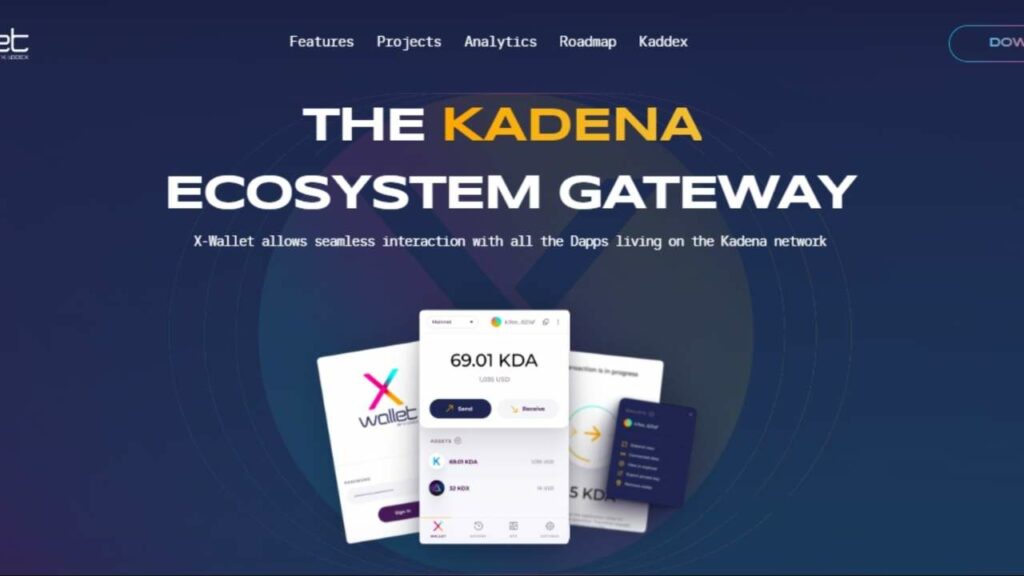
This is the only wallet in the Kadena ecosystem that supports all the tokens on the Kadena network. X-Wallet enables users to send and receive crypto aspects, interact with Dapps, and view and execute cross-chain transfers seamlessly. This web extension wallet is powered by Kaddex and it permits users to buy, store and manage crypto assets within Chrome.
All accounts created within X-Wallet are automatically k:accounts. These accounts are secure. The passwords and security keys are generated by X-Wallet and only the user has access to them.
Best Place to Stake Kadena
There are a couple of options to stake Kadena. The best place to do so would be dependent on the APR you’re looking for, as well as, the flexibility you want. Currently, for crypto exchanges, Coinmetro offers the highest APR, offering stakers the ability to earn up to 18% APR. The Binance crypto exchange also allows you to stake KDA.
What You Need to Know about the Future of Kadena
In the last quarter of 2021, Kadena bridged to the Ethereum Mainnet. This enabled $KDA to be wrapped as an ERC-20 token. Kadena bridged cross-chain with not just ETH but other Layer 1’s like Polkadot and Terra. This allows the platform to unlock additional liquidity for use on the network.
Recently, the protocol has undergone rapid expansion to satisfy the current trends. This is inclusive of Kadena as DAO Defi, which extends the KDA token’s use in NFTs and governance. The platform also promises that play-to-earn crypto games are coming to the network.
Conclusion: Should You Put Your Money Kadena?
Kadena is extremely volatile in the short term. For example, in August 2022, the previous Kadena price dropped by 21.34% in 7 days and 7.35% in 24 hours. And at the moment it is 94.16% below its all-time high. This means Kadena can make a great investment in the long run but based on the sudden price movement mentioned above Kadena won’t be the best crypto for short-term investors.
Risks Investing in Kadena
Cryptocurrencies are extremely volatile and Kadena is no exception. The token has shown more volatility than some popular cryptocurrencies. So before investing in Kadena it is crucial to know that there’s the potential of losing your invested funds during such drastic drops. You should only invest what you’re willing to lose.
Our extensive analysis of the different Cryptocurrencies doesn’t stop here. You can also check out our “What is Arweave?” guide to know more about another huge project.
FAQ
Most frequent questions and answers
Kadena is energy efficient at scale. This means that as the network demand rises (transactions per second) Kadena’s energy use stays constant.
It would take about 42 hours to mine 1 Kadena coin or 50 hours depending on the mining equipment being used.
Kadena provides scalability and high performance due to its Chainweb architecture.
No, Kadena cannot be efficiently mined with FPGA, CPUs, and GPUs miners.
Kadena offers a highly scalable platform that processes 480,000 transactions per second, which surpasses even Solana.
Yes, KDA is on Binance.
No, Kadena is not owned by JP Morgan, rather 2 former employees of JP Morgan founded the platform.
Kadena’s token economic model refers to the supply, allocation, platform reserve and liquidity schedule of KDA.
Skrumble.com provides all its content for informational purposes only, and this should not be taken as financial advice to buy, trade, or sell any investment instruments or products, including but not limited to cryptocurrencies, or use any specific exchange. Please do not use this website as investment advice, financial advice, or legal advice, and each individual’s needs may vary from that of the author. Investing in financial instruments, including cryptocurrencies, carries a high risk and is not suitable for all investors. It is possible to lose the entire initial investment, so do not invest what you cannot afford to lose. We strongly advise conducting your own research before making any investment decisions. This post includes affiliate links with our partners who may compensate us.
To view our privacy policy read here.

